Failure of Greater Romania Plans: Romania vs. USSR
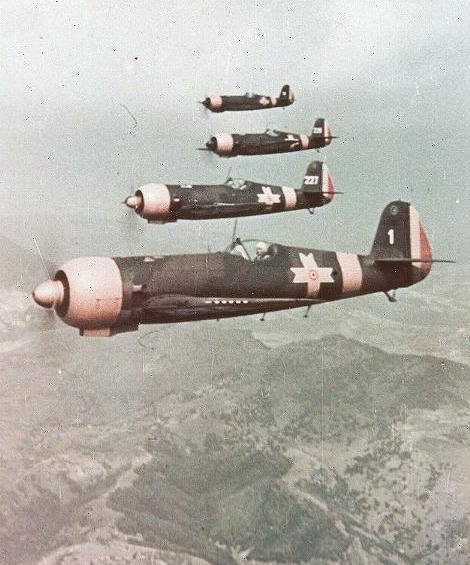
Unfortunately, historical the lessons do not reach the minds of all politicians, because at one time the USSR put an end to the dreams of "Great Romania" (at the expense of our lands), but modern Romanian politicians again dream of a "great power". So, on June 22, 2011, Romanian President Traian Basescu said that if he were the head of Romania in 1941, he would send Romanian soldiers to the war with the Soviet Union just like Antonescu. The statement is quite in the spirit of the centuries-old Russophobia inherent in European elites.
After the First World War, in which Romania conquered both on the side of the Entente and on the side of Germany, Bucharest seized the territory of the Russian Empire - Bessarabia. After the defeat of Germany, Bucharest again went over to the side of the Entente and took part in 1919 in the war against Soviet Hungary. Even before this war in 1918, the Romanians, taking advantage of the collapse of the Austro-Hungarian Empire, captured Transylvania from the Hungarians.
"Great Romania" in 1920's.
After that, Romania focused on London and Paris, entering the composition of the so-called. "Small Entente." Therefore, when the Second World War began - Germany attacked Poland, Bucharest maintained a partnership with France. But after Hitler's Germany began its victorious march through Europe, and the Wehrmacht captured Paris, Bucharest went over to the side of the strong - the Third Reich. This did not save Romania from territorial losses, the lands seized after the First World Land had to be returned, “Great Romania” actually collapsed: the USSR demanded the return of Bessarabia, 27 June 1940 of the year brought the army on alert, the crown council of Romania decided not to resist, 28- The Red Army crossed the border, occupying Bessarabia and Northern Bukovina. Most of these territories were 2 August 1940 of the year in the Moldavian SSR, part of the territory became part of the Ukrainian SSR. Hungary took advantage of this - having demanded the return of Transylvania, through the mediation of Berlin, after the Second Vienna Arbitration, Romania had to give up half of this territory - Northern Transylvania. Romania had to give way to another ally of Berlin, Bulgaria, according to the Krai peace treaty 7 September 1940, the Bulgarians were given the South Dobrogee region, which Romania received after the Second Balkan war 1913.
Romania after the territorial concessions 1940 year.
Romania, these events caused a political crisis - since September 1940, the power in the state passed into the hands of the government of Marshal Ion Antonescu, who actually became the absolute dictator. At the same time, Romania formally remained a monarchy. 6 September 1940, the Romanian king Carol II, under pressure from public opinion, was forced to abdicate the throne of Romania in favor of his son Mihai, while he himself and his wife fled to Yugoslavia. The new government finally sets a course for an alliance with the Third Reich, planning to restore the "Great Romania" at the expense of the USSR - November 23 1940, Romania joined the Berlin Pact. Romanian politicians planned not only to get Bessarabia, but also to attach lands to the country up to the Southern Bug, the most radical believed that the border should be drawn along the Dnieper and even east, creating, by the example of Germany, its “living space”, “Romanian empire”.
The beginning of the war with the USSR
The half-millionth German group arrived in Romania back in January 1941, under the pretext of protecting the Antonescu regime from the Iron Guard (an extreme right-wing political organization founded in 1927, led by Corneliu Zelia Codreanu, originally Antonescu collaborated with her, but then their ways dispersed), which in November organized a wave of political assassinations, terror and Jewish pogroms, in January the legionnaires started a mutiny altogether. Their leader Horia Sima thought he would be supported by the Third Reich, but Hitler preferred to support the Antonescu regime. Then the headquarters of the 11 of the German army arrived, the Germans took control of the oil fields, Hitler attached great importance to them.
The Romanian army did not represent independently the forces, the main reasons: poor weapons, lack of armored vehicles (the German command widely used, to arm the Romanians, captured equipment, weapon - even before the war, they began to supply weapons to the Polish army, then Soviet and even American weapons, the low fighting qualities of the Romanian soldiers themselves. In the field of the Air Force, half of their needs were covered by the IAR Braşov aircraft plant in Brasov, it was one of the largest aviation factories in South-Eastern Europe, it employed about 5 thousand people. He produced models - IAR 80, IAR 81, IAR 37, IAR 38, IAR 39, aircraft engines. Components. The rest of the needs were covered by foreign products - French, Polish, British, German aircraft. The Romanian Navy had only a few combat units (including 7 torpedo boats and destroyers, 19 gunboats, boats), posing no threat to the Black Sea fleet USSR. A significant part of the ground units were cavalry brigades, divisions.
By the beginning of the war with the USSR, 600 thousand forces were drawn up to the border, consisting of the 11-German army, units of the 17-th German army, 3-th and 4-th Romanian armies. According to Romania, in July 1941 of the year on the Eastern Front fought against the USSR - 342 000 Romanian soldiers and officers. As in the case of other states or pro-fascist organizations in the occupied countries, this war was declared “sacred” in Romania. Romanian soldiers and officers were informed that they were carrying out their historic mission to “liberate their brothers” (implied Bessarabia), defend “the church and European civilization from Bolshevism”.
On 3: 15 am 22 June 1941, Romania attacked the Soviet Union. The war began with the strikes of the Romanian aviation on the Soviet territory - Moldavian SSR, Chernivtsi and Akkerman regions of Ukraine, Crimea. In addition, shelling of Soviet border settlements began from the Romanian bank of the Danube and the right bank of the Prut. On the same day, the Romanian-German forces forced the Prut, Dniester and Danube. But the plan with the capture of bridgeheads could not be fully implemented, already in the first days of the Soviet border guards, with the support of the Red Army, eliminated almost all enemy bridgeheads, with the exception of Skulen. They opposed the enemy invasion: border guards, 9, 12 and 18, the Soviet army, the Black Sea Fleet. The June 25-26 border guards (79 frontier detachment) and units of the 51 th and 25 th rifle divisions even captured the bridgehead in Romania, and the Romanian army was unable to destroy it. As a result, the Soviet forces left the territory of Romania on their own during a general retreat in July.
Romanian-German troops 22 June 1941 of the year on the Prut River.
At the same time, by the end of June in the north-west of Romania, the Germans had formed a powerful strike force, preparing to conduct an operation to encircle the Soviet forces. July 2 11-I German and 4-I Romanian armies launched an offensive in the Balti region, the Soviet command expected such an attack, but was mistaken in choosing the location of the main attack of the enemy. They were waiting for him on the Mogilev-Podolsk direction, 100 km north of Balti. The command began a gradual withdrawal of troops to prevent their entourage: July 3 left all the lines on the Prut River, July 7 (the battle for him went on July 4) was left by Hotin, North Bukovina was left in the middle of July, July 13 began the battles for Chisinau - 16 July, he left, 21 th Soviet forces left Bender, 23 th they entered the Romanians. As a result, the entire Bessarabia and Bukovina were under the control of the German-Romanian troops, and the front line moved to the Dniester River. 27 July Hitler thanked Antonescu for the decision to fight for Germany and congratulated him on the "return of the provinces." The positive outcome of the border battles was the disruption of the plans of the German command to encircle and destroy the Red Army troops between the Prut and the Dniester rivers.
Crossing the Prut.
Battle of Odessa
Antonescu accepted Hitler's offer to continue military operations beyond the Dniester: 4-I Romanian army under the command of Nicolae Chouperce, her number was in 340 thousand, 3 August forced the Dniester at the mouth and 8-I was ordered to attack the Soviet forces in the south of the defensive positions of the Soviet garrison But, the Black Sea Fleet prevented these plans, so the Romanians 13-th bypassed the city from the north, completely interrupting its communication by land. The city of August 4 received the order of the Supreme Command about the defense - initially, the garrison of Odessa was 34 thousand people.
15 August, the Romanian army struck in the direction of Buldinki and Sychavka, but the assault failed, 17 and 18 August attacked along the entire perimeter of the defensive lines, 24 of the Romanian troops were able to break through to the city, but then were stopped. The enemy is trying to break the resistance by air strikes: the main targets were the port and the sea approaches to the city in order to interrupt the supply of the Soviet garrison. But the Air Forces of Romania and Germany did not have non-contact sea mines, therefore it was not possible to block the sea supply. On September 5, the Romanian army stopped the offensive, 12, when reinforcements arrived, continued its attempts to take the city. On September 22, the Soviet forces, consisting of the 157 and 421 rifle divisions, as well as the 3 regiment of the marines, counterattacked on the left flank, the Romanians suffered heavy losses and the 4 army was on the verge of defeat. The Romanian command requires reinforcements and raises the question of the advisability of a further siege. As a result, Moscow decided to withdraw its forces - the Red Army was pushed far to the east, Odessa lost its strategic importance. The operation was successful, they left Odessa without a loss, having left not defeated. The Romanian army suffered significant losses - 90 thousand killed, missing and wounded, and more than a quarter is the commanding staff. Soviet irretrievable losses - more than 16 thousand people.
Ion Antonescu - Romanian Marshal, Prime Minister and Conductor (Leader).
Terror, occupiers policy
On the territory of Romania and the occupied lands of the USSR, the Romanians unleashed a policy of genocide and terror against the Gypsies, Jews, “Bolsheviks”. Antonescu supported Hitler’s “racial purity” policy and considered it necessary to clear the territory of “Great Romania” from “Bolshevism” and “racially unclean” peoples. He said the following: “I will not achieve anything unless I clear the Romanian nation. Not borders, but homogeneity and purity of a race give strength to a nation: this is my highest goal. ” A plan was developed for the extermination of all the Jews of Romania. First of all, they planned to “clean up” Bukovina, Bessarabia, Transnistria, after their “cleansing”, they planned to exterminate the Jews in Romania itself, in total there were about 600 thousand people in these territories. The process of creating a ghetto (created in Chisinau), concentration camps began, the largest of them - Vertuzhansky, Sekurensky and Edinet. But Gypsies became the first prisoners and victims, they were arrested by 30-40 thousand, in total during the war years the Romanians destroyed about 300 thousand gypsies.
Then they decided to transfer Roma and Jews from the camps of Bessarabia and Bukovina to the full concentration camps in Transnistria, across the Dniester. For these mass deportations of Jews and Gypsies, a special plan and itineraries were developed. Their foot marches were called “Death Marches”: they walked in winter, they were lagging behind and were unable to walk, they were shot on the spot, for every 10 km there were dug holes, where the corpses of the dead were buried. The Transistria camps were overcrowded, a huge number of people died from hunger, cold and disease, before their execution. Golta district was named “the kingdom of death”, where the largest Romanian concentration camps were located - Bogdanovka, Domanevka, Akmachetka and Mostovoe. In the winter of 1941 — 1942, large-scale mass executions of prisoners were carried out in these concentration camps. In just a few days, the executioners shot 40 thousand unfortunate prisoners, another 5 thousand were burnt alive in Bogdanovka. According to some information, only during this period, 250 thousand Jews were destroyed here.
In the occupied lands, the Bukovina Governorate was established (under the leadership of Rioshyan, the capital is Chernivtsi), the Bessarabian Governorate (the governor is K. Voikulescu, the capital is Chisinau) and Transnistria (G. Aleksianu became the governor, then Tiraspol, then Odessa). On these lands a policy of economic exploitation and romanization of the population was carried out. The dictator Antonescu demanded that the local Romanian occupation authorities behave as if "the Romanian authority was established in this territory for two million years." All property of the Soviet Socialist Republic was transferred to the administration and the Romanian cooperatives, entrepreneurs, allowed to use free forced labor, corporal punishment of workers was introduced. In Germany, from these lands, more than 47 thousand people were hijacked as workers. All cattle selected in favor of the Romanian army. Food consumption norms have been introduced, everything else has been withdrawn. There was a de-Russification of the territory - Russian books were withdrawn and destroyed, the Russian language and the Ukrainian dialect were forbidden to be used in the state, business spheres. There was a romanization of educational institutions., Even Russian names were changed into Romanian: Ivan - Ion, Dmitry - Dumitru, Mikhail - Mihai, etc. This policy is currently used by the Ukrainian "elite" - "Ukrainizing" Small Russia.
Romania, arrest of Jews for further deportation.
Further fighting, defeat of the Romanian troops
The Romanian people paid a high price then for the mistakes of their political elite, despite the vast territories seized, Bucharest did not withdraw its troops from the front and continued the war. 3-I Romanian army took part in the battle of Uman, when the Romanians reached the Dnieper, they lost about 20 thousand more people. Romanian units participated in the invasion of the Crimea, in the battle for Sevastopol, during the Crimean campaign they lost another 20 thousand people. In general, it is necessary to note the rather high combat effectiveness of a number of units of the Romanian army, especially with the support of the Wehrmacht, sometimes they showed surprising persistence in battle, such as: 4-I mountain division during the assault on Sevastopol. But the highest losses were expected by the Romanian units in the battle for Stalingrad - Stalingrad robbed the Romanian people of more than 158 thousand people, another 3 thousand soldiers were captured. The Romanian Air Force lost the 73 aircraft during the Stalingrad battle. From the 18 of the Romanian divisions deployed in the south, 16 suffered heavy losses, in fact, were defeated. In total, Romania lost 800 thousand people during the war, of whom 630 thousand people were killed on the Eastern Front (of which 480 thousand were killed). These figures show the seriousness of the involvement of the Romanian people in this war and the dreams of "Greater Romania".
1944 the year was a sad ending for fascist Romania: during the fighting for the Kuban and Taman, the German command was able to evacuate the main forces, but the Romanian troops lost another 10 thousand people; in May, the German-Romanian units left the Crimea. At the same time, an offensive to the east was going on: during the Dnieper-Carpathian, Umansko-Botoshanskoy, Odessa, Yassko-Kishinev operations in March-August of 1944, Odessa, Bessarabia, Bukovina, Transnistria were liberated. 23 avgutsa Antonescu was overthrown, power passed to Mihai I and the Communist Party, Berlin could not suppress the uprising - the Red Army intervened and on August 31 USSR troops occupied Bucharest. King Mihai I announced the end of the war with the USSR, Antonescu was given to Moscow, which supported his service (Siguranza - secret police) was disbanded. However, later the USSR returned the former Romanian conductor (leader) back to Romania, where he was sentenced to death as a war criminal after the trial in Bucharest (1 June 1946, Antonescu was executed). The USSR returned Bessarabia and Bukovina (together with the Hertz district), besides 23 in May 1948, Bucharest transferred the Snake Island and part of the Danube Delta to the Soviet Union (including the islands of Maikan and Ermakov). Southern Dobrudja remained part of Bulgaria, Hungary gave North Transylvania to Romania. Under the Paris Peace Treaty of the Year 1947, the USSR established an unlimited military presence in Romania.
At present, Romania is again undergoing active processes of growth of nationalism, the plans of "Greater Romania" have been rehabilitated - Moldova, Transnistria should be included in it, Romania has territorial claims to Ukraine. History has a habit of repeating itself, and for its lessons that have not been learned, the people who succumb to the demagogy of politicians pay a tremendous price ...
The Red Army entered Bucharest.
Sources of:
Levit I.E. The participation of fascist Romania in the aggression against the USSR. Sources, plans, implementation (1.IX.1939 - 19.XI.1942). Kishinev. 1981.
Russia and the USSR in the Wars of the 20th Century ”, ed. G. Krivosheev. M., 2001.
http://militera.lib.ru/h/sb_crusade_in_rossia/03.html
http://ru.wikipedia.org/wiki/Румыния_во_Второй_мировой_войне
http://www.bbc.co.uk/russian/international/2011/06/110630_basescu_antonescu_russia.shtml
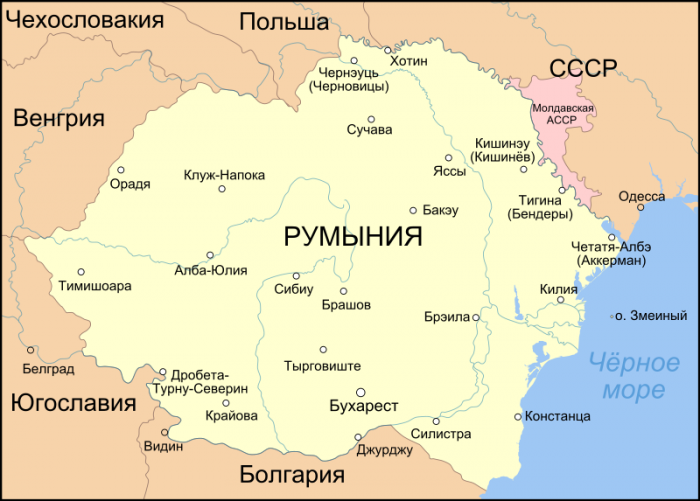
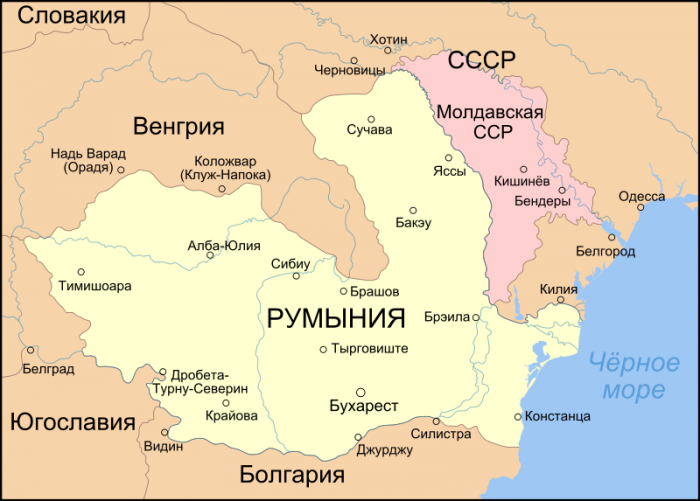
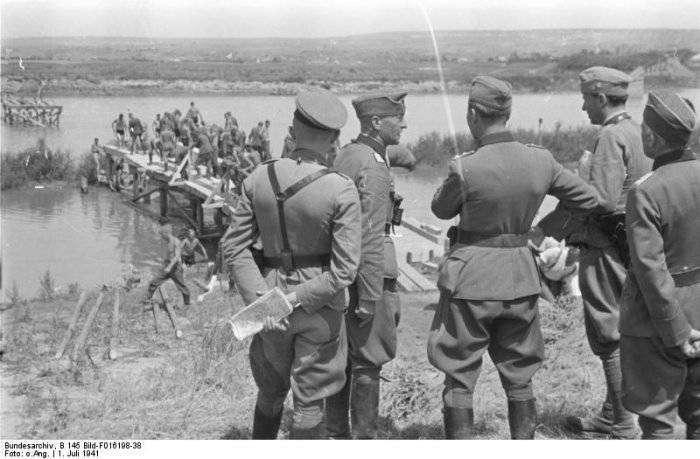
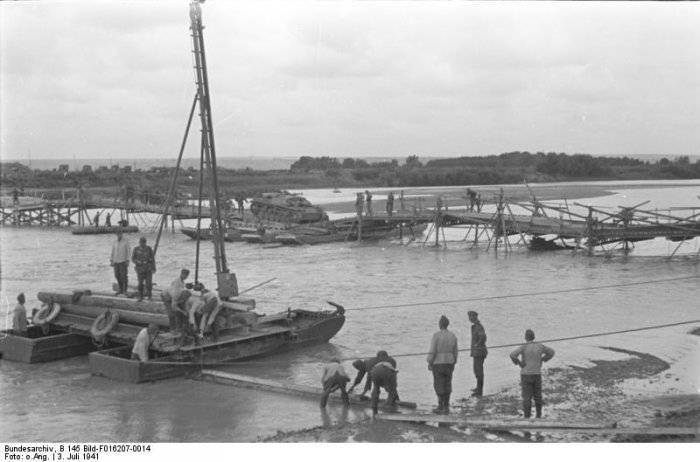
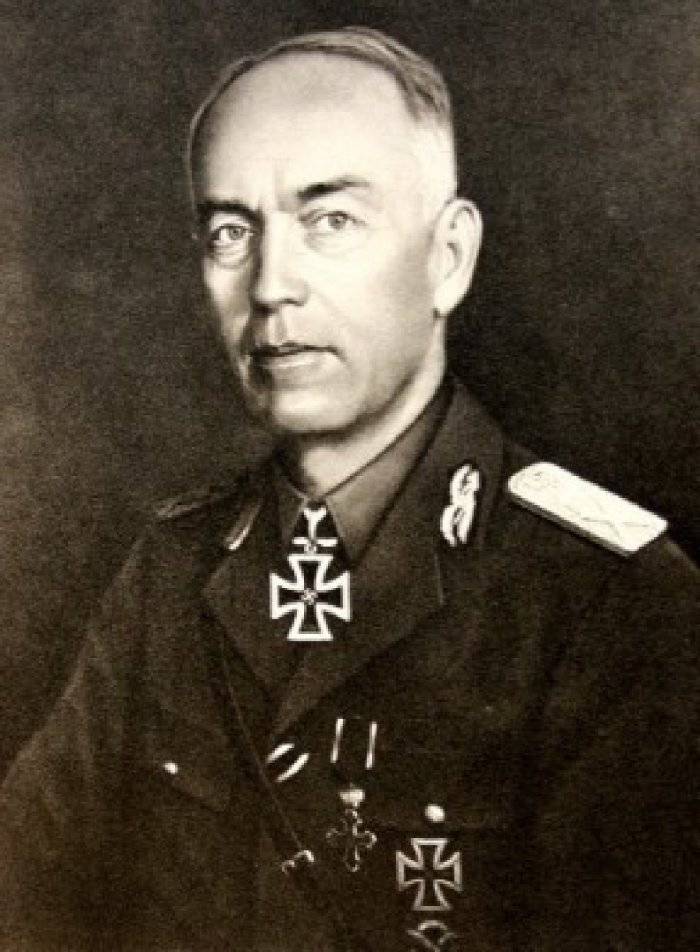
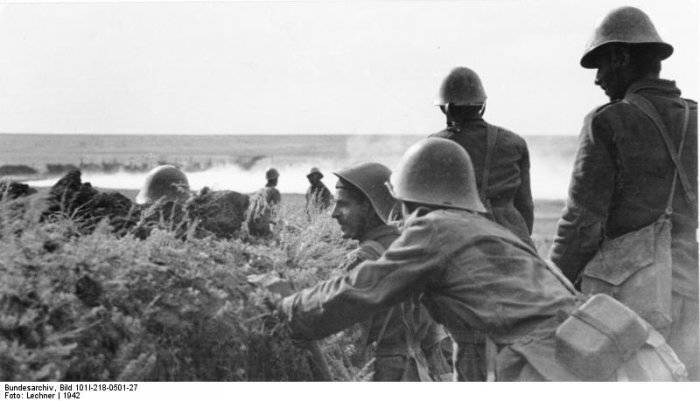
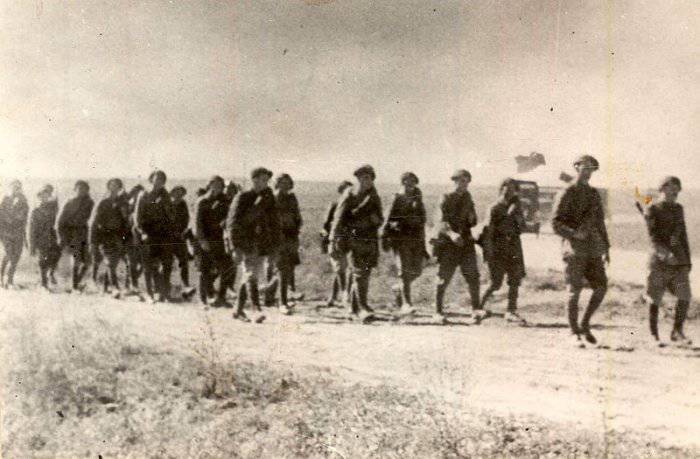

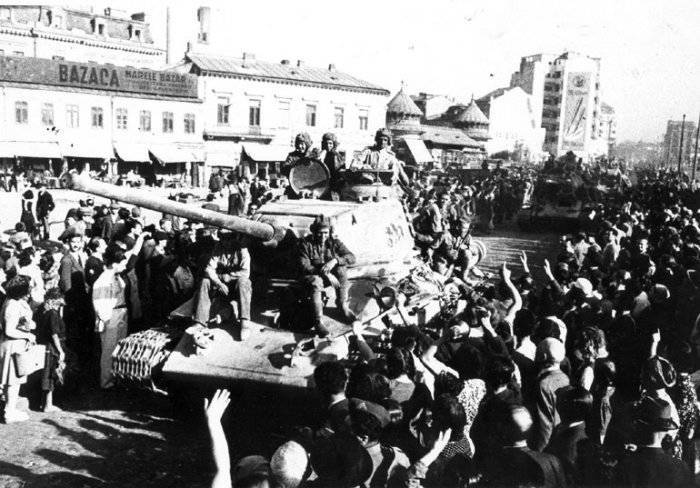
Information